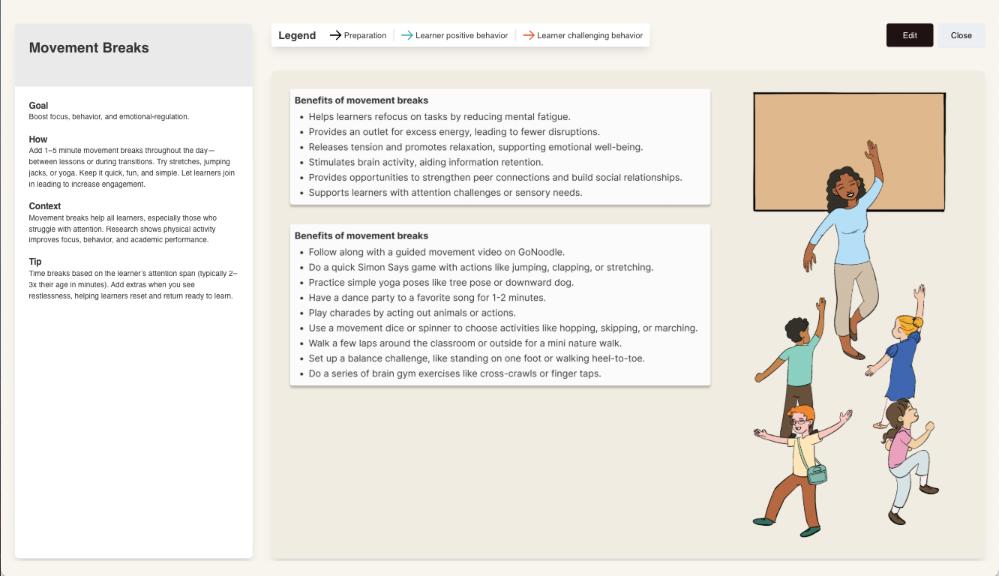
Movement Breaks
Quick “Brain Breaks” to Boost Focus, Behavior, and Emotional Regulation
Movement Breaks—sometimes called brain breaks or active transitions—sprinkle 1- to 5-minute bursts of physical activity (stretching, yoga poses, jumping jacks) between lessons and during class transitions. For BCBAs, special-education teachers, and parents, these short, structured activities reset attention spans, reduce restlessness, and prime the brain for learning in both general-education and autism support classrooms.
Why use Movement Breaks?
- Sharper attention and academic gains. Meta-analyses show that brief classroom physical-activity breaks can raise on-task behavior by 20–35 % and improve math and reading scores.
- Lower disruptive behavior. Structured movement decreases off-task and escape-maintained behaviors, especially for learners with ADHD and executive-functioning challenges.
- Improved mood and self-regulation. Even two minutes of moderate movement elevates dopamine and serotonin levels, helping learners return to tasks calmer and more emotionally balanced.
What you’ll unlock inside BIP Visualized:
- A step-by-step overview of how to use this evidence-based strategy
- Ability to customize images and descriptions to individualize for your learner
- Aligning, printable visual resources to support teaching and generalization
- Ability to add this visual strategy and more to build a custom-made visual BIP tailored to your learner’s needs
Start your free trial to access the Movement Breaks strategy and create a personalized, team-friendly visual Behavior Intervention Plan today.
